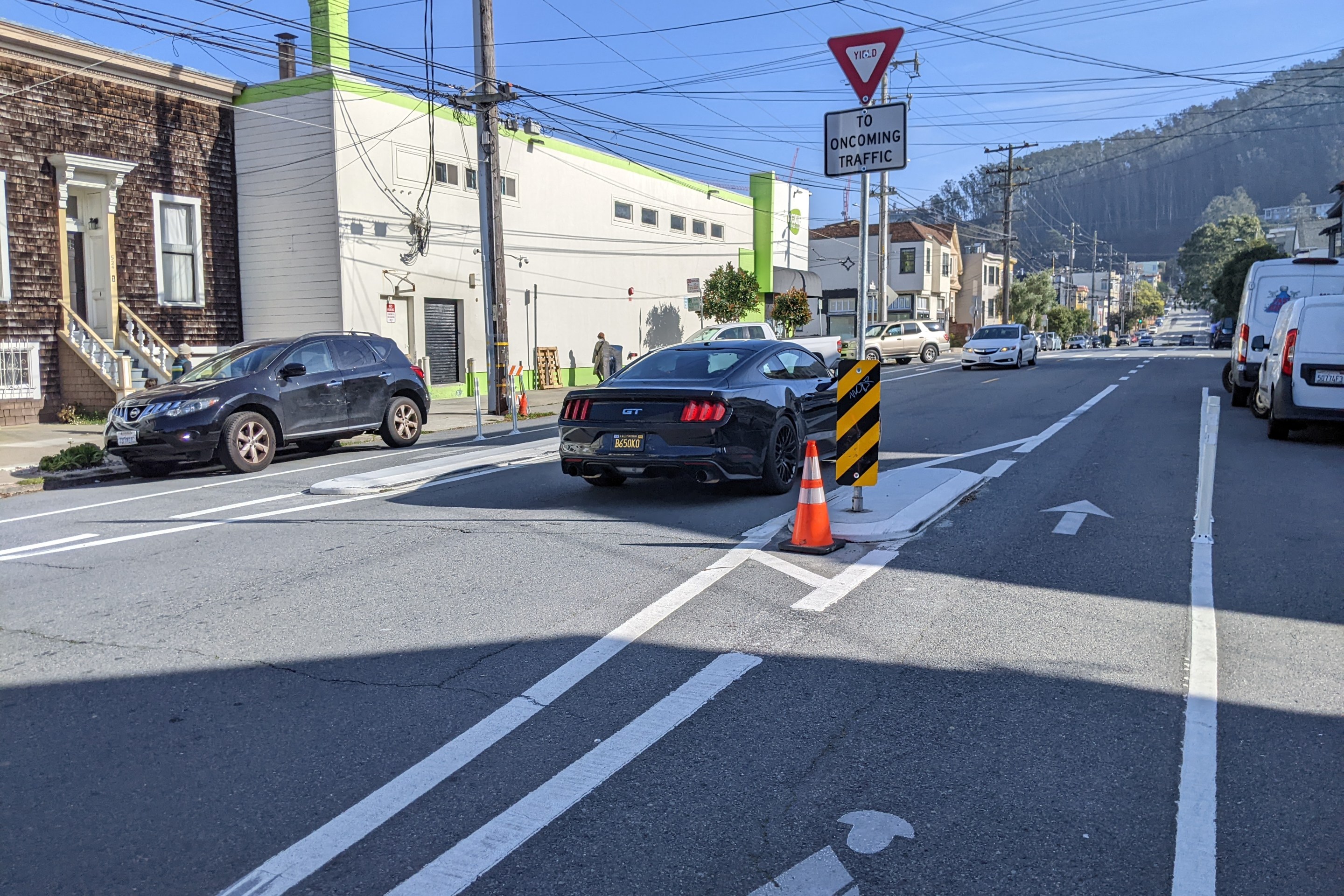We now have in our hands the 775-page Surface Transportation Authorization Act,
which was released yesterday by James Oberstar (D-MN), chairman of the
House transportation committee. It is, in many ways, a remarkable bill
-- a blueprint for how transportation planning and infrastructure
construction might undergo a significant shift away from the mindsets
that have dominated for the past half-century. There is a lot to like
in the bill.
Current spending levels, to say nothing of the increases proposed in the bill, will be impossible to sustain in the absence of a new source of revenue. This is a huge obstacle to passage.
As
currently written, STAA would significantly strengthen the Office of
Intermodalism and work toward making DOT planning "mode neutral" --
that is, not operating under the assumption that highways will always
get first priority in planning and funding.
It would create
an Office of Livability, focused entirely on seeking balance in mode
choice by boosting transit ridership, bicycling, and walking. The bill
seeks to streamline the process by which new transit projects apply for
funding, and it allows federal officials to consider likely changes in
land-use from transit construction in considering whether a project
deserves funding.
STAA aims to empower metropolitan planning
organizations. It seeks to depoliticize funding decisions and support
private investment in infrastructure by creating national and
metropolitan infrastructure development banks. It lays the groundwork
for significant new investments in high-speed rail in America (though
it cuts the definition of high-speed to 110 miles per hour or higher).
The
bill includes a push to support "complete streets" and a national bike
route network. It establishes increased transit ridership and reduced
carbon emissions as explicit goals. And of course, the bill is targeted
to allocate a lot more money than in previous reauthorizations, with a
lot more money for transit (though transit's share increases only
modestly).
But as my colleague Elana Schor noted yesterday,
what's missing from the bill is as telling as what's included. The
775-page length may suggest excessive comprehensiveness, but in fact
much of the bill is little more than placeholders. "[To be supplied]"
is in ample supply, as is "[$]." Ideally, actual numbers would follow
immediately after the dollar sign.
These blanks
hint at the challenge chairman Oberstar and fellow committee members
John Mica (R-FL), Pete DeFazio (D-OR), and John Duncan (R-TN) will have
in getting their bill through the legislative process any time soon.
Time is scarce; Congress already has some substantial legislative
challenges on its hands, and it may have to address the looming
shortfall in the Highway Trust Fund before the August recess.
Political
capital is also wanting. With most legislative eyes on health care and
the Waxman-Markey energy and climate bill, there may not be enough
chits available to strike the necessary deals on this transportation
bill.
This is especially true given the money issue. STAA, as
written, simply does not address the fact that current spending levels,
to say nothing of the increases proposed in the bill, will be
impossible to sustain in the absence of a new source of revenue. This
is a huge obstacle to passage, and a major reason for the
administration's requested 18-month delay for the bill.
With
the economy still in recession, the federal deficit approaching $2
trillion, a $1 trillion or so health bill in the works, and GOP
legislators going all out to attack the climate bill under
consideration as representing a major new energy tax, this is not a
convenient time to be discussing transportation tax increases. If the
funding issue cannot be resolved, and there is every indication that
neither the administration nor a number of high priority legislators
are anxious to solve it, then the reauthorization bill will probably
not pass.
All hope for this particular bill is not yet lost,
but a number of very difficult questions will have to be answered to
turn this blueprint into a bold new transportation law.





